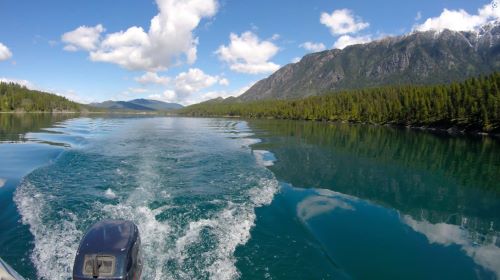From the Monashee and Selkirk mountains in the west to the Central Purcells and Rockies in the east, the Kootenay region is world-renowned for its stunning vistas. It is a complex combination of deep river valleys, large fjord-like lakes, lush forests, and lofty mountain peaks. Adding to the outdoor diversity are many small, productive lakes scattered throughout. It is the adventure playground of North America, offering an extensive range of outdoor recreational activities – not the least of which is fishing its many lakes.
This guide offers information about angling in six Kootenay lakes. Several, like Premier, Rockbluff, North Star, and Peckhams lakes, are well-known and easily accessed. However, there are others, like Cherry and Rosebud lakes, that will take a little travelling over rough terrain before an angler can enjoy the seclusion, beautiful scenery, and excellent fishing. The Kootenay Trout Hatchery, located 32 kilometres from Cranbrook, stocks these lakes with various strains of rainbow trout. Like most areas of B.C., the best time of year to fish these lakes is in the spring, early summer, and fall; however, higher-elevation lakes can provide good fishing right through the Kootenay’s hot and dry summers.
While rainbow and cutthroat trout comprise much of the region’s sport fishery, anglers will also have luck fishing for kokanee, bull trout, eastern brook char, bass, and even walleye.
1. Rockbluff (Quartz) Lake
Location: 72 kilometres north of Cranbrook
Surface area: 18.56 hectares. Maximum depth: 25.6 metres. Mean depth: 9.1 metres
Elevation: 945 metres | Stocking link
If fishing is your primary motive, the best time to visit Rockbluff (Quartz) Lake is in the spring. Not only will you avoid the crowds, you’ll enjoy excellent fishing for rainbow trout. Located in Premier Lake Provincial Park, the lake is one of many in the area that offer quality angling. In 2024, Rockbluff was stocked with 2,000 Pennask-strain all-female triploid yearling trout.
In late May (just after ice-off) and throughout June, rainbows will cruise the shoals, feeding actively on insects and anything else that looks appetizing. Productive areas for cruising fish are the islands at the southern end of the lake, or near the “hump.” Various colours of size 12 to 16 Liquid Lace Chironomid Brassie or bloodworm fly patterns work well, suspended under a strike indicator in water depths of four to seven metres (12 to 20 feet). Be on the lookout for emerging chironomids in order to match their size and colour. Similarly, keep an eye out for early mayfly hatches – trout will often target this food source instead of chironomids. Cast or troll nymph patterns below the surface with a floating or sink-tip line. Caddis hatches will prevail from late June to August. Carey Specials and Doc Spratleys are fine nymph imitators. Change to dry flies as hatches of flying insects develop, and try to “match the hatch” with your pattern.
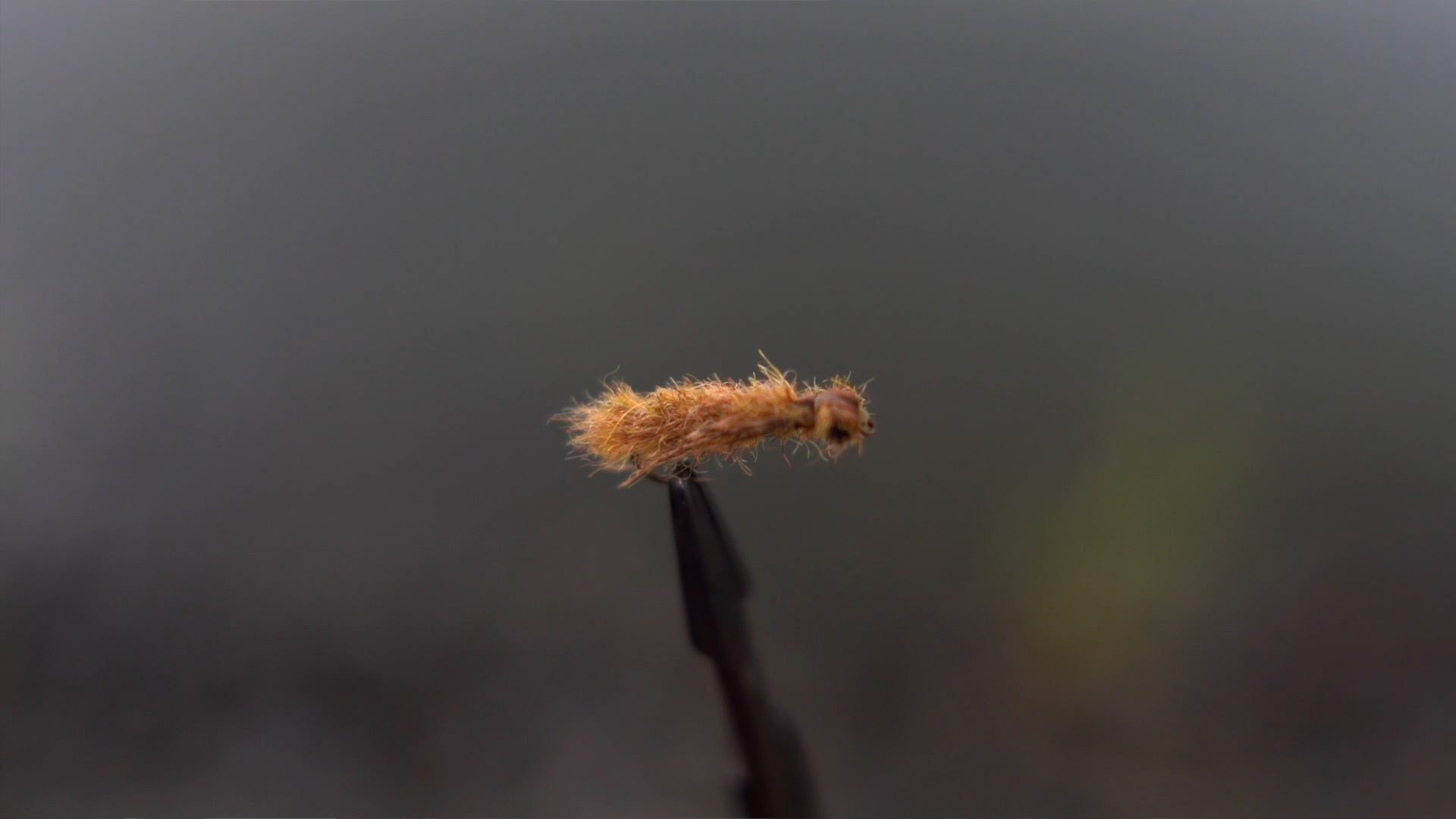
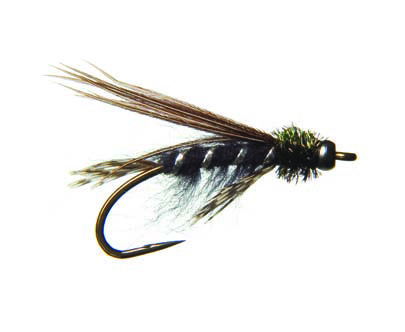
In the summer, when dragonfly and damselfly nymphs migrate from bottom structure to shore, their nymphal patterns are popular wet flies. Moor your boat or float-tube in the shallows and, with your back towards shore, cast out a sinking tip or weighted fly line, and retrieve in short strips to imitate a migrating dragonfly nymph propelling itself to shore. This technique often elicits aggressive strikes from hungry trout.
Lures will also take fish. Try trolling with Kwikfish, lake trolls, or Luhr-Jensen Krocodile spoons.
Within Premier Lake Park, you can also try fishing Canuck, Yankee, and Cats Eye lakes. A network of trails connects Yankee, Canuck, and Turtle lakes for one- to four-hour day-hikes.
Facilities: There is a parking area on the southwestern shore of Rockbluff Lake. An outhouse is available, and there is a 61-site campground with picnic tables at Premier Lake.
Directions: Access is from Highway 92/93, 72 kilometres from Cranbrook. Well-marked signs at the turn-off lead you 12 kilometres into the park. Continue past Premier Lake and the main campground for a short drive to Rockbluff (Quartz) Lake.
2. Peckhams Lake
Location: 16 kilometres north of Fort Steele
Surface area: 13.5 hectares. Maximum depth: 9.4 metres. Mean depth: 4.1 metres
Elevation: 835 metres | Stocking report
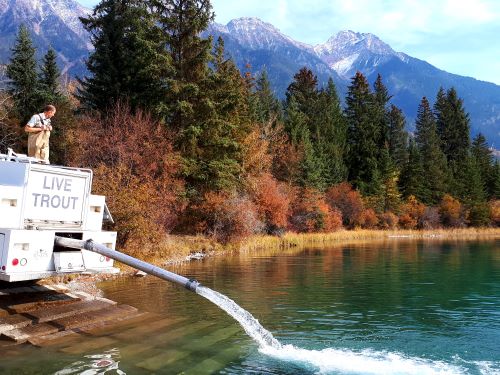
Lake with Fish. Image: Leanne Jones
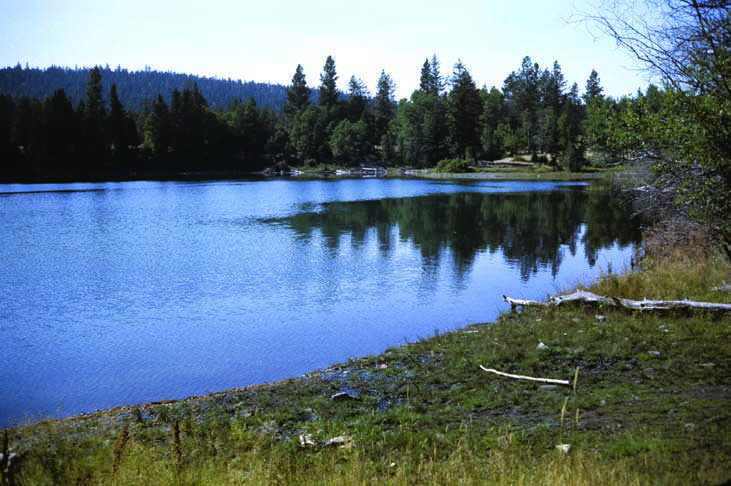
A popular and scenic destination, Peckhams Lake is located in Norbury Lake Provincial Park. Lying in a rolling valley of the Rocky Mountain Trench, the lake is surrounded by trembling aspen woodland and offers stunning views of the Steeples in the Hughes Range of the Canadian Rockies.
Peckhams Lake offers good fishing for rainbow trout in the spring and fall. It is stocked annually with 2,000 Blackwater-strain rainbow yearlings. April is the start of fishing with chironomid imitations, and it continues into early June. Fly-fishers can be successful casting or trolling bead head nymphs throughout the day, and switching to dry flies as the hatch progresses. Successful bead head nymph patterns include the Hare’s Ear and Prince, along with Pheasant Tail and Rabbit’s Foot emergers.
Lure selection should include Kwikfish, lake trolls, and small spinners. As summer progresses, fishing pressures increase and finding fish becomes more difficult. Because trout can be lethargic during the heat of the day, troll searching patterns with full-sink lines, and tie on dragonfly or damselfly nymphs in the early morning or evening. Cooler fall months bring better success – chironomids, shrimp, and leeches are popular patterns.
Nearby Norbury Lake (the park’s namesake) lies south of Peckhams, and offers fishing for cutthroat and rainbow trout in the spring and fall. Another option to the north is Horseshoe Lake, which has good fishing for stocked rainbows. Reach this popular lake by travelling north from Peckhams Lake along the Wardner-Fort Steele Road to Horseshoe Lake Road. Hiking, biking, swimming, canoeing, and kayaking are all popular activities.
Visit the Kootenay Trout Hatchery and Visitor Centre in Wardner, approximately 12 kilometres south of Norbury Lake. This interpretive area includes aquariums, educational models, and displays.
Facilities: The park has a 46-site campground at Norbury Lake, and a picnic area at Peckhams. Outhouses, potable water, and a boat launch with dock are at each lake. There is a no-powerboat restriction.
Directions: Follow Highway 3/93 to Fort Steele, and turn east onto the Wardner-Fort Steele Road. Travel for 16 kilometres and, after passing the junction with Fenwick Road, you will arrive at Peckhams Lake.
3. North Star Lake
Location: South of Jaffray
Surface area: 20.95 hectares. Maximum depth: 10 metres. Mean depth: 3.3 metres
Elevation: 847 metres. | Stocking link
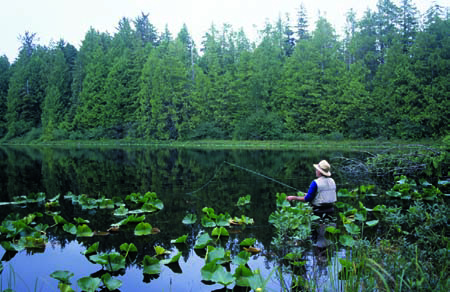
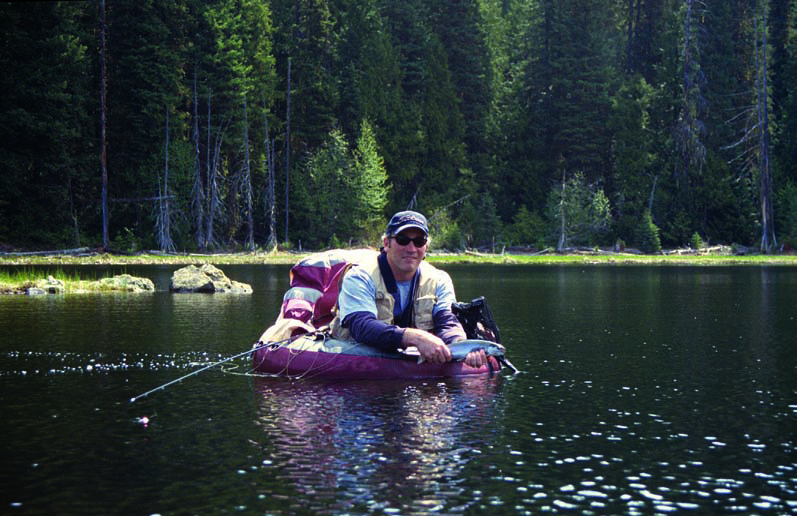
Despite the presence of redside shiners, North Star Lake is a great family fishery. Stocked annually with 4,000 Blackwater rainbow triploids, the lake rewards anglers who put in some time and effort. The fast-growing Blackwater strain – with weights up to 2.5 kilograms (5.5 pounds) in this lake – prefers larger fare: casting or trolling leech, Woolly Bugger, dragonfly nymph patterns, or even bucktails will be productive. For trolling lures, try spoons, gang trolls, or Kwikfish.
Because North Star Lake’s shoreline is very shallow and muddy, it is advisable to concentrate your efforts in the northwestern part of the lake, adjacent to the recreation site. In the early season, work the shallow drop-offs where these Blackwater rainbows forage for nymphs, snails, and molluscs near the shore in a habitat similar to their fluvial origins. In summer, go deep with a full-sink fly line with leech patterns or lures. Occasionally in the evenings, with a good hatch, you can take trout on the surface. Try size 8 to 12 Hexagenia mayfly or travelling sedge patterns like the Mikulak Sedge, Goddard Caddis, Green Drake, or Grizzly Wulff, as well as stimulator patterns.
Although North Star is a well-known summer destination, campers can also enjoy Suzanne Lake, a relatively short distance away with access just off the Jaffray-Baynes Lake Road. Suzanne Lake is twice the size of North Star, with a popular recreation site and good fishing for largemouth bass and stocked rainbow trout.
Facilities: Set within a forest of towering Ponderosa pines, North Star Lake Recreation Site has 11 campsites with picnic tables. The site also has a cartop boat launch, wharves, and toilets.
Directions: Follow Highway 3/93 to Jaffray, and then head south along the Jaffray-Baynes Lake Road for approximately five kilometres until you reach the branch road east to North Star Lake and the recreation site.
4. Cherry Lake
Location: Between Cranbrook and Lake Koocanusa
Surface area: 38.4 hectares. Maximum depth: 13 metres. Mean depth: 6.6 metres
Elevation: 1,227 metres
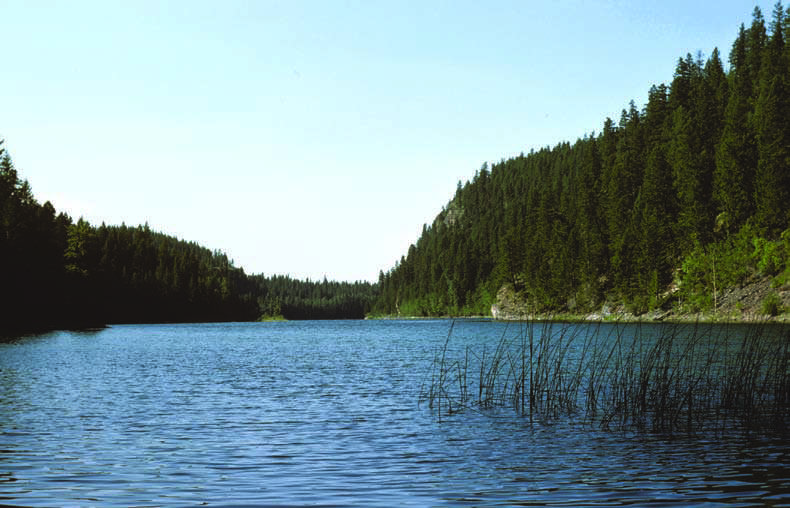
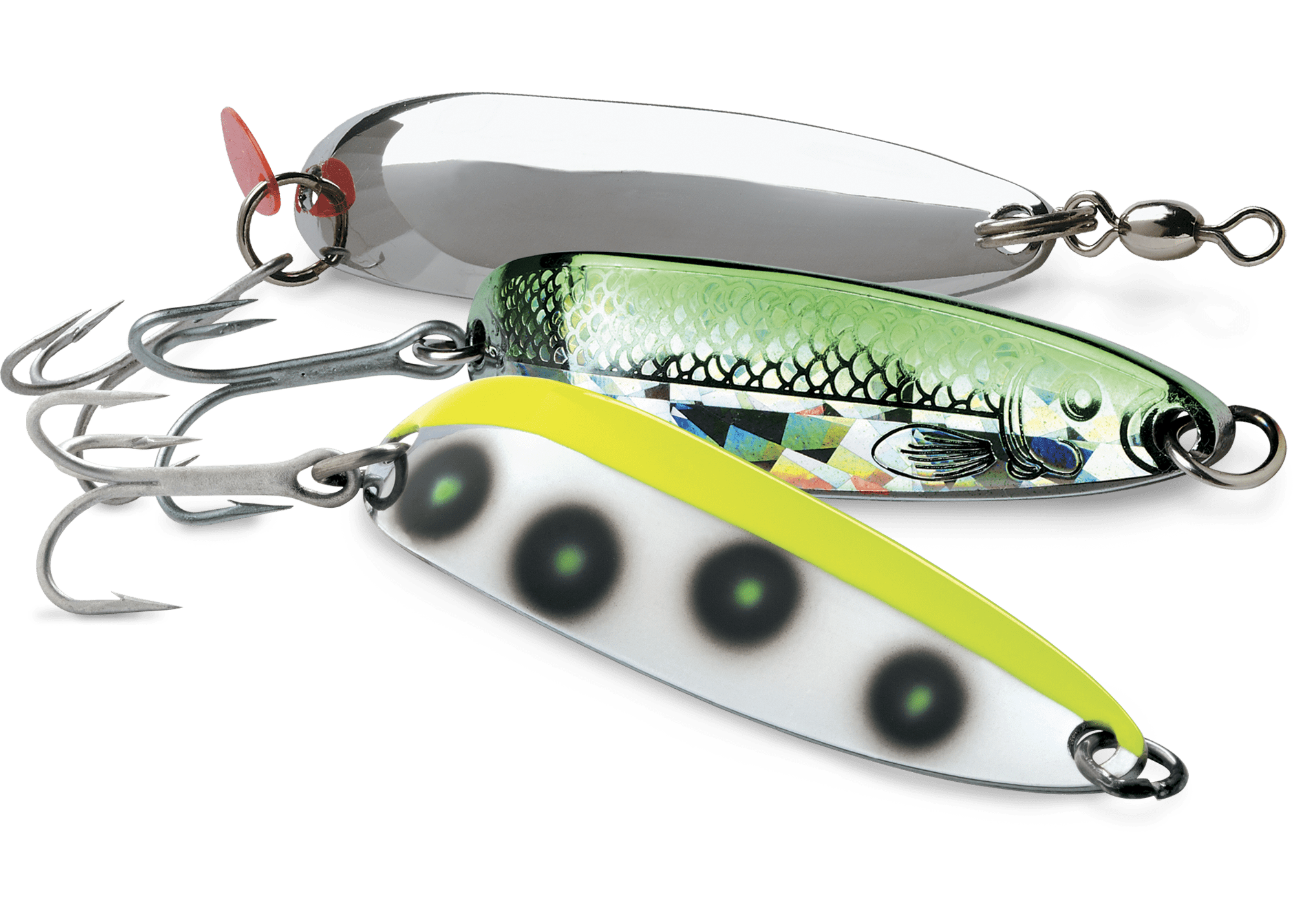
Located between Cranbrook and Lake Koocanusa, Cherry Lake is a scenic gem nestled amidst the high country of the McGillivray Mountain Range. Numerous rainbow and cutthroat trout inhabit the lake. Once the sun warms the shoal areas and hatches begin, the trout will come readily to a dry fly. The fish are small – only 20 to 30 centimetres in length – but plentiful. Pale Morning Duns, Blue Wing Olives, and Tom Thumbs in sizes 12 to 16 all work well. One of the best spots to fish is at the southwestern end, near the drop-off. Position your boat or float-tube so you face the shore, and work small size 10 to 14 Prince or Hare’s Ear nymph patterns from shallow to deeper water. For those who prefer spin-casting, Panther Martin, Mepps, or Blue Fox spinners attract fish very well.
The surrounding country may lack the dramatic peaks of the Rocky Mountains, but the forested hills, abundant wildlife, pristine lakes, and secluded setting make for a very peaceful and pleasant getaway. Other activities include hiking and mountain biking. South of Cherry Lake, 7 Mile Lake offers fair fishing for cutthroat trout. Cherry Lake is also a favourite base camp for local hunters.
Facilities: The Cherry Lake Forest Recreation Site is a small cleared area with room for a few tents. It also has a small cartop boat launch.
Directions: Getting to remote Cherry Lake is part of the adventure. Commencing at the community of Jaffray, take the Jaffray/Baynes Lake road and travel south 16.3 kilometres to the junction with Kikomun Road (known as the Four Corners junction). Set your odometer to zero, and turn right (west) onto Kikomun road. Proceed 5.7 kilometres, crossing the single-lane Bailey bridge, and turn left onto the Caven Creek Forest Service Road (signed). The kilometre marker signs on this road start at 16 kilometres. Set your odometer to zero, and travel 23.2 kilometres to the junction with the Cherry Lake Forest Service Road (signed). The junction is located on the right (north) side of the road, just past the 38-kilometre marker. Travel another 3.8 kilometres on this road to the recreation site, staying right at the junction between the 41- and 42-kilometre marker signs. The road to the lake can be rough, and a high-clearance vehicle is recommended.
5. Rosebud Lake
Location: five kilometres north of Nelway
Surface area: 13.36 hectares. Maximum depth: 18 metres. Mean depth: seven metres
Elevation: 809 metres. | Stocking link
This quiet little lake is popular among locals, but is rarely crowded. Ice-off occurs in mid- to late April, and the first weeks offer good chironomid fishing. Ice Cream Cone Chromie chironomid pupa patterns work well. Fishing these flies using short leaders suspended in one- to two-metre (three to six feet) depths of water near shore will catch 30- to 40-centimetre (12- to 16-inch) trout; fishing them with long leaders under a strike indicator in depths up to six metres (20 feet) can produce larger trout. Rainbow trout weighing up to 3.5 kilograms (8 pounds) have been caught on size 16 chironomid patterns.
After lake turnover, fishing will pick up again. Late May and June are productive chironomid times, but evening hatches of mayflies impel one to use emerger patterns (like bead-head Prince or Hare’s Ear nymphs) in the early evening. As the hatch progresses, change to dry patterns like Blue Winged Olives, Royal Wulffs, Green Drakes, or Adams Irresistibles. Trolling spoons, flies, or gang trolls (like a willow-leaf baited with maggots) are also popular choices.
As summer progresses, casting of trolling dragonfly or damselfly nymph patterns through the weed bed at the northeastern end of the lake can elicit hard strikes. During the heat of July and August, go deeper with a full-sink line, and search for fish near the bottom with dragonfly nymphs and leech patterns (like black or olive Woolly Buggers). For exciting surface action, be alert for travelling sedge hatches on the lake in mid-July.
From September to November, try to fish water boatman and scud patterns with an erratic action. Scud can be found anywhere in the water column, but water boatman stay close to shore by clinging to submerged debris. The first frost heralds the boatman’s nuptial flights as they ascend through the water column before taking off into the wind. Use a Type 2 sinking line or sink-tip, cast your water boatman fly towards shore, and let it sink through the water column. Strip-retrieve your line quickly with long pulls to best imitate the boatman.
In summer, the nearby Salmo River offers good fishing.
Facilities: A cartop boat launch and small wilderness campsite are by the lake, but there are no other camping facilities besides a single outhouse. No powerboats are allowed, and there is a daily limit of two trout/char.
Directions: Rosebud Lake is 60 kilometres west of Creston and 30 kilometres southeast of Salmo. If travelling east along Highway 3, at 14.3 kilometres past Salmo, take Highway 6 toward the U.S.A./Canada border for nine kilometres, then turn left onto Rosebud Lake Road for another six kilometres until you arrive at the lake.
6. Premier Lake
Location: 72 kilometres northeast of Cranbrook
Surface area: 229.6 hectares. Maximum depth: 32 metres Mean depth: 15.8 metres
Elevation: 860 metres | Stocking Link
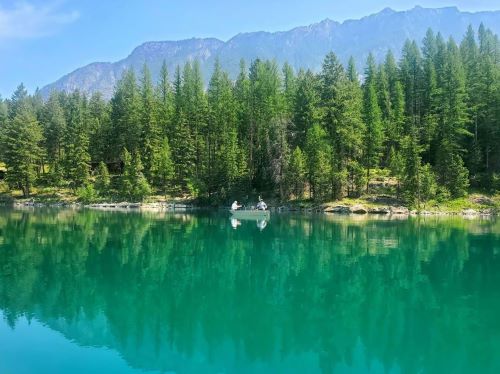
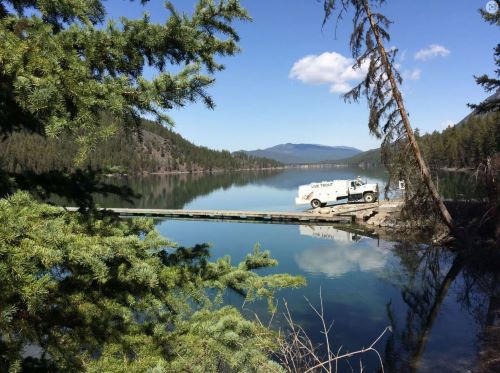
Located at the foot of the western slopes of the Rocky Mountains, Premier Lake has some of the most superb trout fisheries in the East Kootenays. Surrounded by forests of Douglas fir and western larch, the area is rich in wildlife. It is home to a variety of migrating birds, eagles, ospreys, herons, and kingfishers. There are also large mammals – elk, mule deer, whitetail deer, moose, and bighorn sheep – in the area. This lake is a very popular summer destination, perhaps as much a result of its close proximity to a major highway as its beauty and great fishing.
Premier Lake is stocked annually with 50,000 Blackwater-strain rainbow trout. The average length of a rainbow caught is in the 30- to 35-centimetre (12- to 14-inch) range, but if you’re lucky, you may catch the odd 50-centimetre (20-inch) fish. There is a daily quota of two rainbow trout, and 20 brook trout. No fishing is allowed in the lake’s tributaries.
A good area to fish in spring and early summer is the shoals near the Fish and Game Club at the southwestern end of the lake, but be aware of the “No Fishing Zone” signs from May 15 to June 20 at the southern end of the lake. Chironomid patterns suspended beneath a strike indicator are very effective. The drop-off along the cliffs on the eastern shore is a good spot to troll leeches, Woolly Buggers, and bead head nymphs on full-sinking lines during July and August. Try to match the hatch on summer evenings by first using emerging nymph patterns, then switching to dry-fly patterns like the Adams, Grizzly King, or caddisfly imitation.
Nearby Canuck, Yankee, Rockbluff, and Cats Eye lakes provide more fishing and recreation.
In the spring, hike the Staples Creek Trail to view the fish ladder and rainbow trout spawning channel (note that in 2024, the observation deck is currently being repaired). As Premier Lake is used as a source of Blackwater-strain broodstock, a fish-collection station at Staples Creek provides their eggs for the Kootenay Trout Hatchery – an egg supply for the strain which is used to stock hundreds of lakes in our province.
Facilities: Premier Lake Provincial Park campground provides 61 vehicle/tent campsites with picnic tables, a boat launch, an adventure playground, firewood, hand pumps for drinking water, pit toilets, and a day-use picnic area.
Directions: Take Highway 93/95 72 kilometres north of Cranbrook to Skookumchuck. Another 12 kilometres further north, there is a well-marked exit to Premier Lake. Turn east and follow the paved/gravel road 12 kilometres to the park.
As this rugged region of southeastern B.C. is home to many pristine lakes and willing trout, this guide is only a small sampling of good lakes to fish. If you’re an adventurous angler, explore these hidden gems for the fishing experience of a lifetime. Remember to bring along your freshwater fishing licence (all anglers 16 years and older require a licence in B.C.), and check the freshwater fishing regulations before heading to any lake.
Author: Staff, Freshwater Fisheries Society of BC
